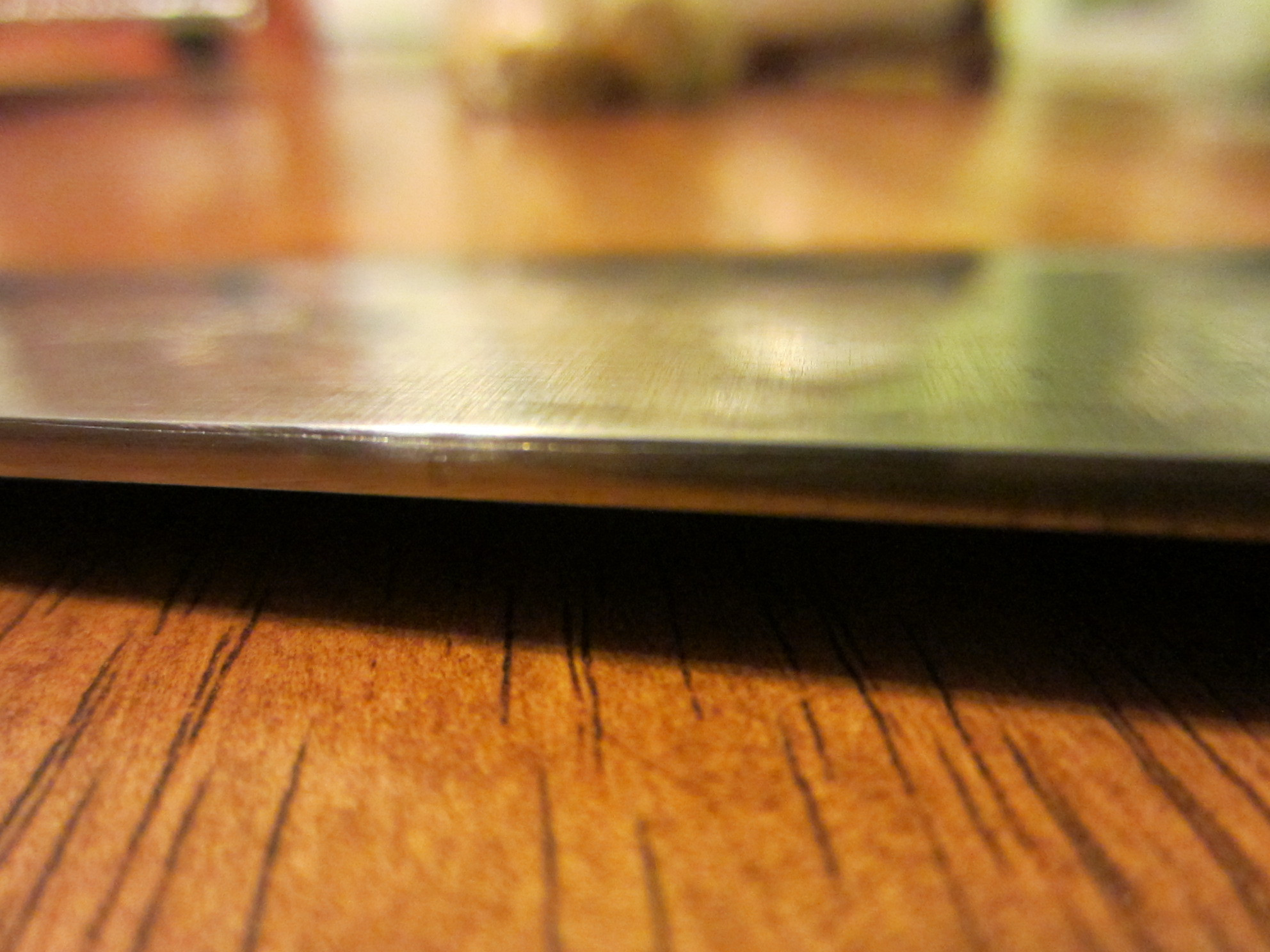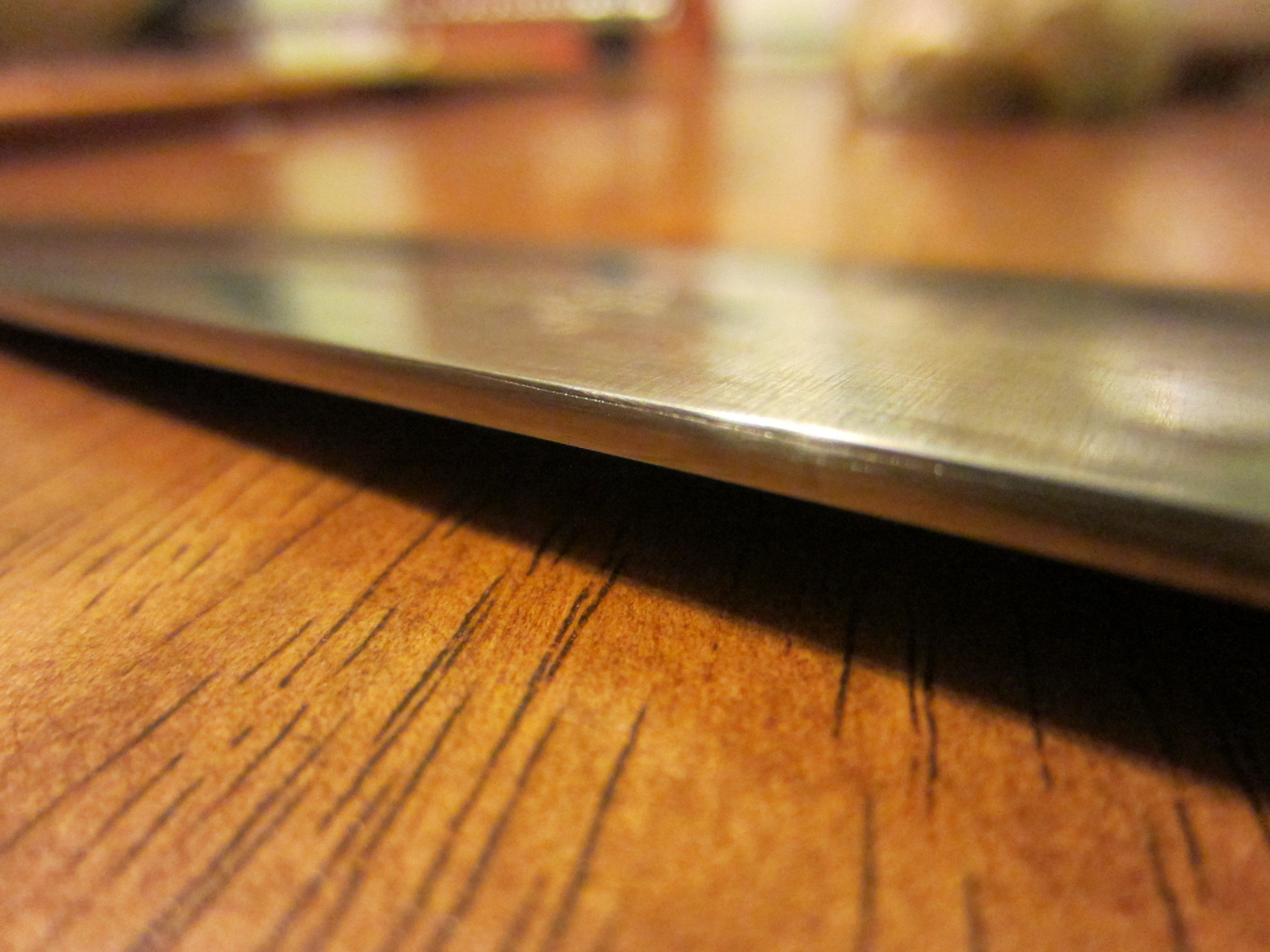yeah... for what its worth, i'm not a huge fan of acid etching things (aesthetically), but it does make for an easy way to see differences in steel layers. It could be as simple as making a paste of BKF, rubbing a bit on the spine, and letting it sit for a bit.
Also, for what its worth, although no one wants to see delamination, it can be a good sign with regard to good low temp forging. As one who has made knives before, and one who also happens to sell them, we always do our best to weed out things like this, but sometimes they are not visible at first (or for a very long time), and most times, they self correct quickly (after slight steel removal), so please try to be understanding (not necessarily directed towards you James, but for others reading this thread... people tend to get uptight about stuff like this)









